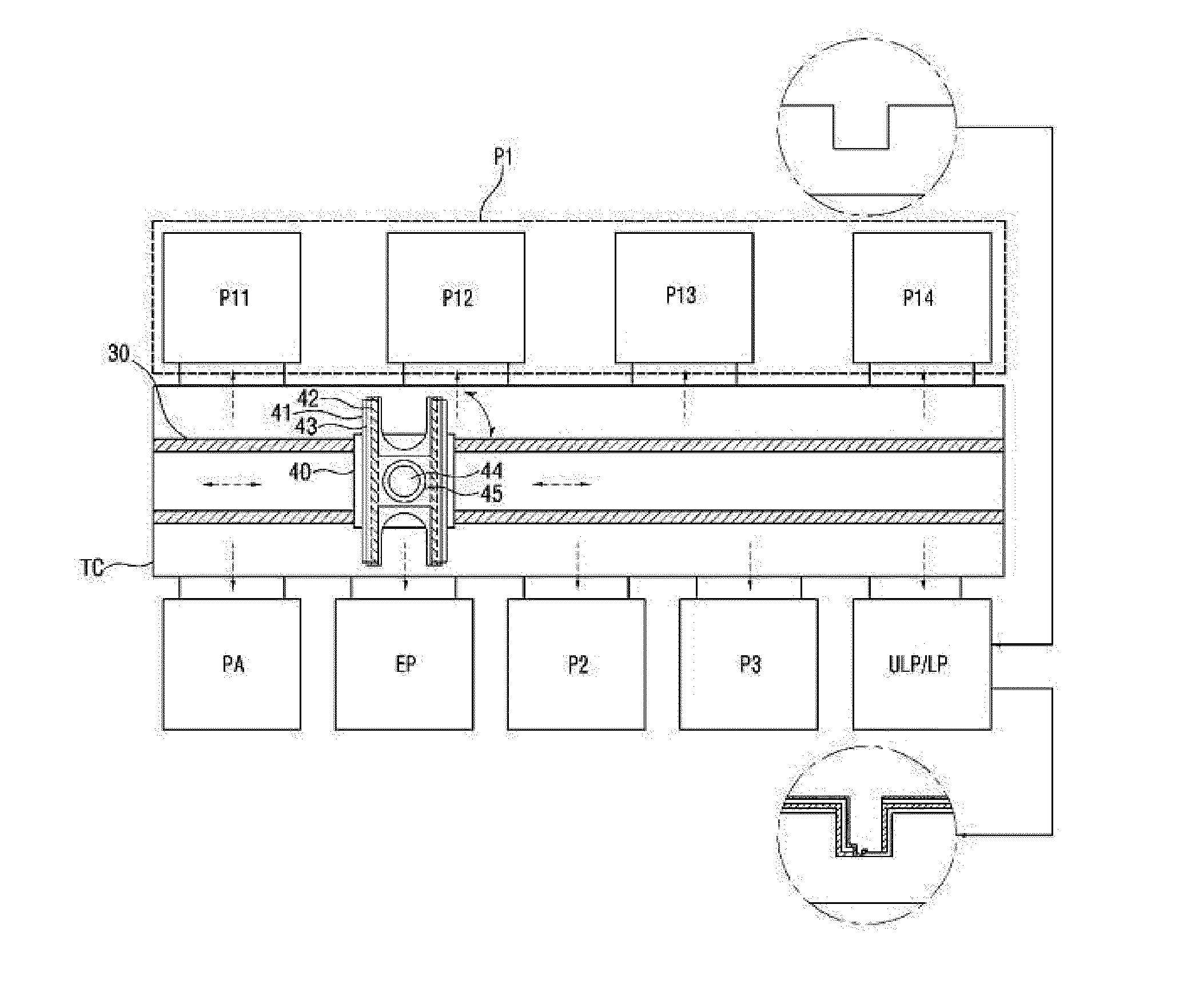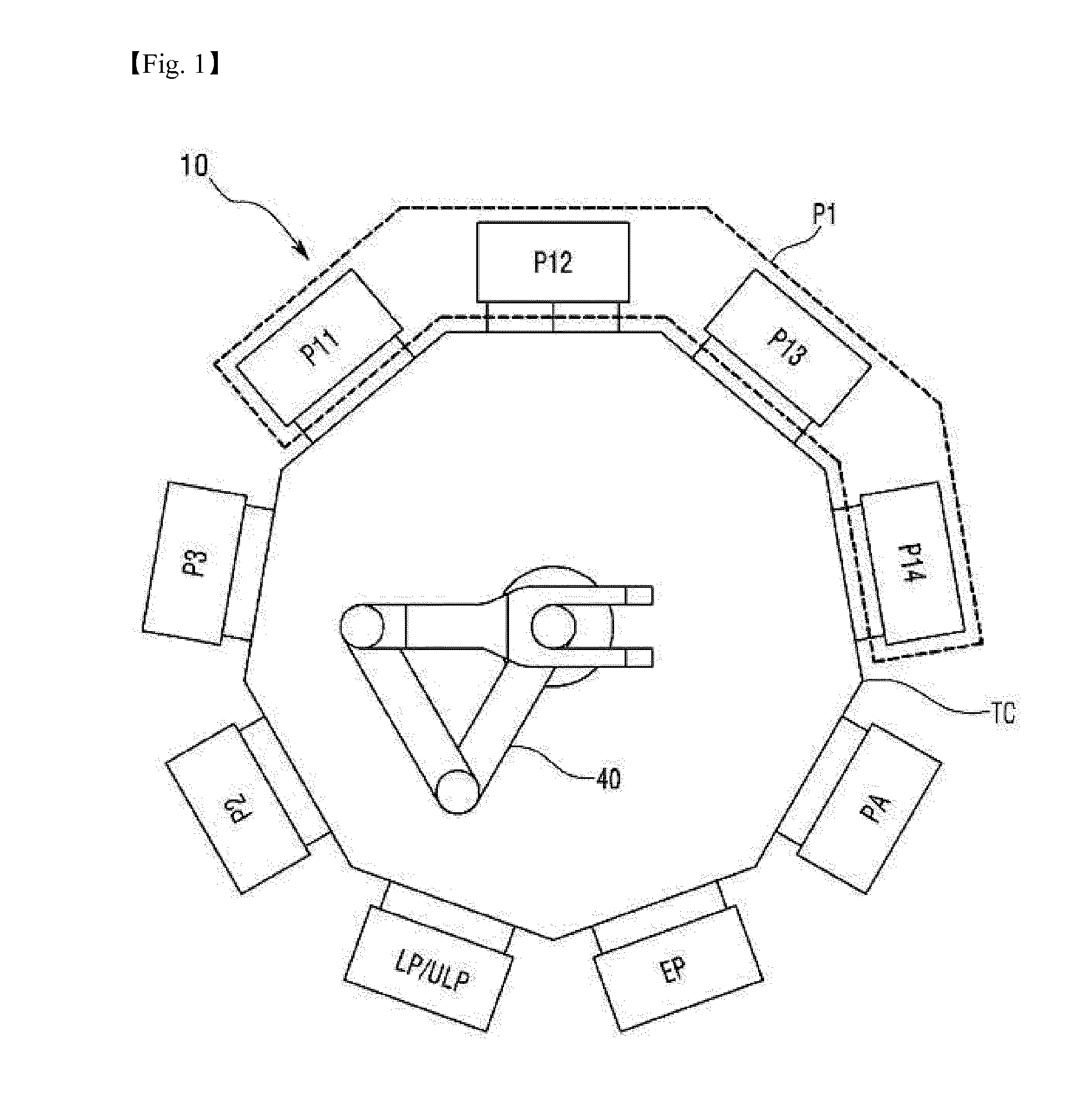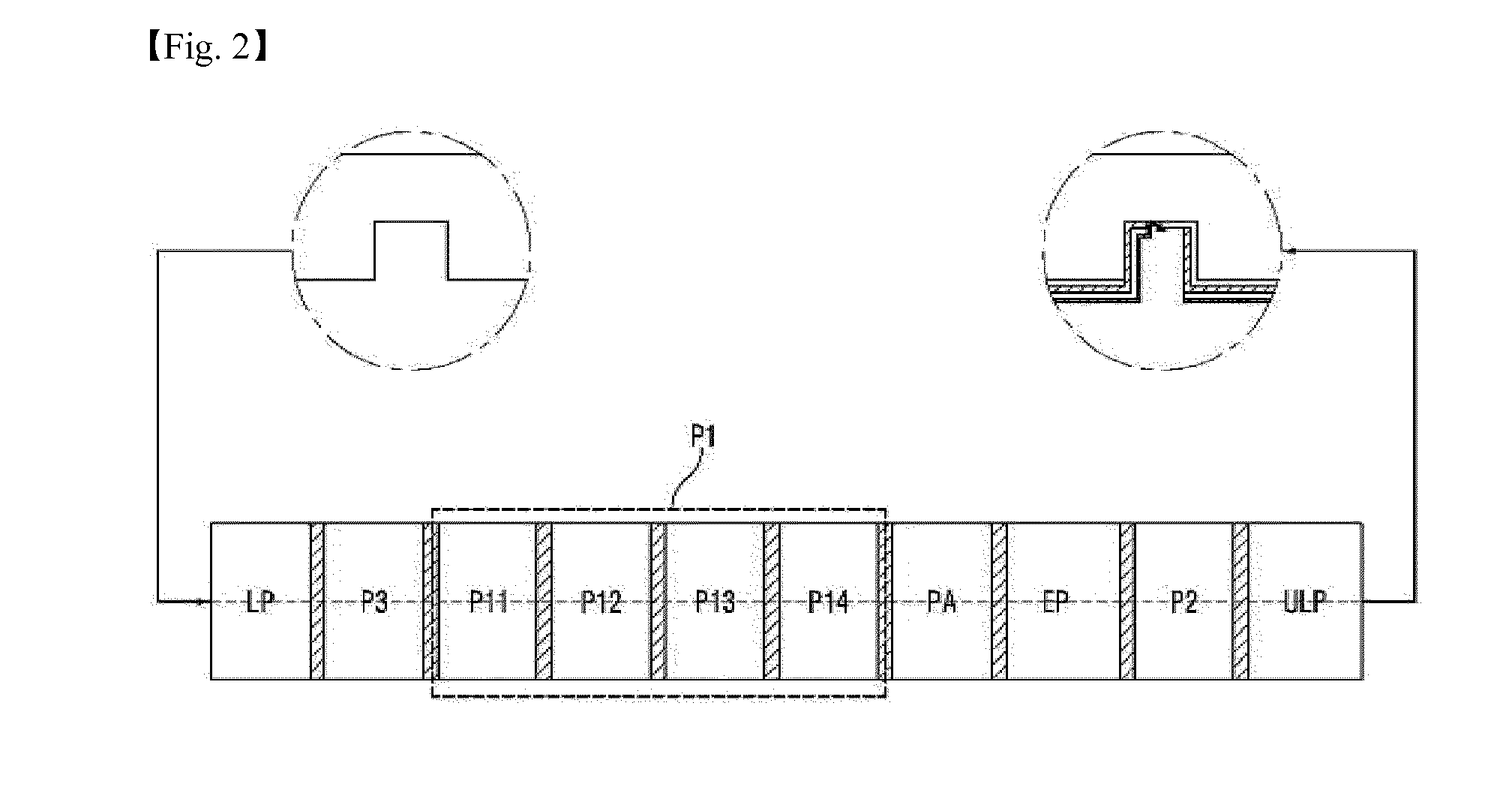Device for manufacturing integrated thin film solar cell
a technology of solar cells and solar cells, which is applied in the direction of basic electric elements, electrical apparatus, and semiconductor devices, can solve the problems of reducing the effective area of electric power generated by the entire integrated thin film solar cell, the inability to continuously perform the deposition process in vacuum, and the thickness of silicon substrate, etc., to achieve the effect of maximizing the effective area, maximizing the electric power production, and high efficiency
- Summary
- Abstract
- Description
- Claims
- Application Information
AI Technical Summary
Benefits of technology
Problems solved by technology
Method used
Image
Examples
first embodiment
[0050]Meanwhile, regarding the integrated thin film solar cell manufacturing apparatus, the method in which the first impurity semiconductor layer, the intrinsic semiconductor layer, and the second impurity semiconductor layer, which form the photoelectric converter, are formed in the above-described unit process chamber P11, the unit process chambers P12 and P13, and the unit process chamber P14 respectively has been described as an example. However, there is no limit to this, and there may be various methods as follows. In other words, the first impurity semiconductor layer, the intrinsic semiconductor layer, and the second impurity semiconductor layer may be formed in the one unit process chamber P11. Also, first impurity semiconductor layer and the second impurity semiconductor layer may be formed in the one unit process chamber P11, and the intrinsic semiconductor layer may be formed in the plurality of unit process chambers P12, P13, and P14. Also, the first impurity semicondu...
second embodiment
[0069]FIG. 3 shows an integrated thin film solar cell manufacturing apparatus with a double-junction structure according to a modified example of the present invention and shows an inline type manufacturing apparatus in a roll-to-roll method or in a roller method. Such an apparatus includes, as shown in FIG. 3, not only one or more unit process chambers P11 to P14 forming the first photoelectric converter but also one or more unit process chambers P11′ to P14′ forming the second photoelectric converter on the substrate where the first photoelectric converter has been formed. The plurality of unit process chambers P11′ to P14′ forming the second photoelectric converter may be connected between the unit process chamber P14 and the mask layer forming process chamber PA forming the mask layer.
[0070]As described with reference to the first embodiment, the integrated thin film solar cell manufacturing apparatuses according to the second embodiment and the modified example of the second em...
third embodiment
[0078]As described above, in the manufacture of the integrated solar cell by the inline type in a roll-to-roll method or in a roller method according to the present invention, it is possible to manufacture the integrated high efficiency thin film solar cell which has a multi junction structure and maximizes the effective area by performing repeatedly or continuously only a deposition process in the plurality of vacuum process chambers.
[0079]FIG. 4 shows an integrated thin film solar cell manufacturing apparatus according to a modified example of the first embodiment of the present invention and shows an inline type manufacturing apparatus in a cluster method.
[0080]Meanwhile, the integrated thin film solar cell manufacturing apparatus shown in FIG. 4 includes the photoelectric converter forming process chamber P1 including one or more unit process chambers P11, P12, P13, and P14, the mask layer forming process chamber PA, the etching process chamber EP, the second electrode layer for...
PUM
 Login to View More
Login to View More Abstract
Description
Claims
Application Information
 Login to View More
Login to View More - R&D
- Intellectual Property
- Life Sciences
- Materials
- Tech Scout
- Unparalleled Data Quality
- Higher Quality Content
- 60% Fewer Hallucinations
Browse by: Latest US Patents, China's latest patents, Technical Efficacy Thesaurus, Application Domain, Technology Topic, Popular Technical Reports.
© 2025 PatSnap. All rights reserved.Legal|Privacy policy|Modern Slavery Act Transparency Statement|Sitemap|About US| Contact US: help@patsnap.com



